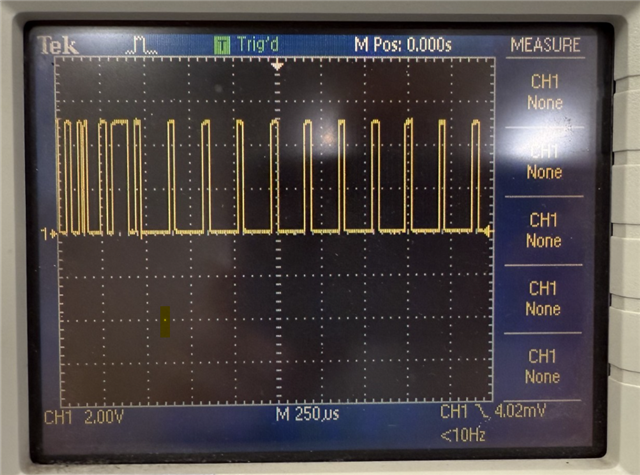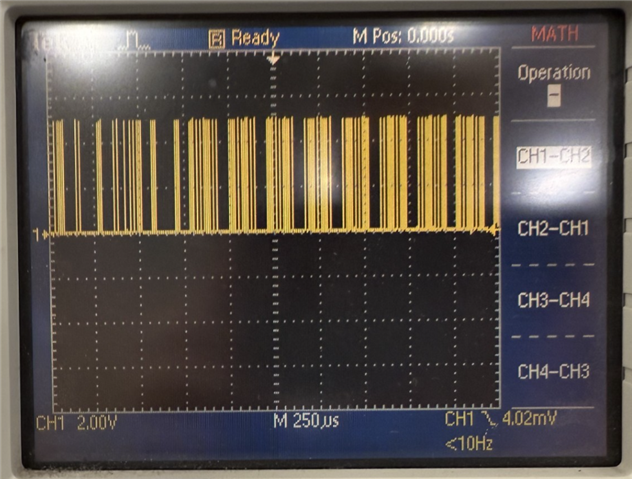Other Parts Discussed in Thread: TL16C754B,
Tool/software:
Hello,
We recently swapped out TL16C754B with TL16C754C on one of our PCBs. As none of the registers changed between the two, we did not make any changes to the firmware (Note: we are not using the Alternate Function Register). When testing the PCB, we found that there was an issue with the data being transmitted from UART B. We took oscilloscope captures of the output of TXA and TXB (referenced to ground), as you can see in the pictures, the TXB waveform has a much higher frequency than the TXA waveform. We should expect to see the same waveform transmitted on TXA and TXB. Are there any changes between TL16C754B and TL16C754C that would affect the baud rate generator for UART B? Are there any other changes that could be causing this issue?



